Search everything
Shows 5273 hit
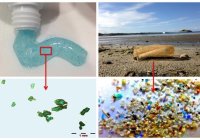
News article
95% of Fulmars in the North Sea Had Plastic in Their Stomachs
Plastic in the form of very small particles, so-called ‘microplastic’, pollutes much of the marine environment. Scientists find microplastics in the majority of samples collected from the world's oceans.
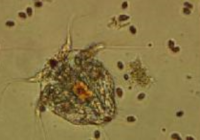
News article
Risk Assessment of Veterinary Medicines Considerably Underestimated
In Norway, the aquaculture industry is economically very important, therefore possible threats, such as parasitic infections from sea lice, are important to control.
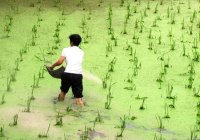
News article
Pesticides in China
Researchers at NIVA have recently published a review on pesticide levels and environmental risk in aquatic environments in China.
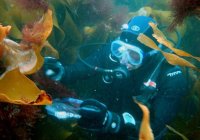
News article
European restoration and habitat preservation
Several important marine habitats in the European oceans are about to disappear. No complete mapping of existing or threated marine habitats in Europe are available, nor a full overview of the restoration potential of degraded habitats. These are the objectives of the EU financed four-year MERCES-project.
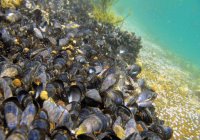
News article
Measuring microplastics in blue mussels
Many different methods have been developed to monitor microplastics, although the lack of
standardisation limits comparability. It is vital to carry out standardised monitoring to
acquire a baseline understanding of microplastic contamination in the Norwegian environment. A new
project aimed to identify suitable methods for monitoring microplastics in blue mussels and sediments - with sampling stations around the coast of Norway.
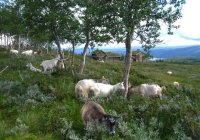
News article
Expanding mountain forest promotes climate warming
Birch forest is currently expanding in mountain regions and far north. This trend is related to climate warming and reduced grazing pressure. A recent study shows that increased birch forest cover at high elevations promotes climate warming.
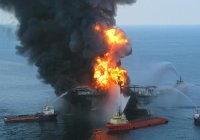
News article
Environmental effects of the Deepwater Horizon oil spill
The Deepwater Horizon oil spill constituted an ecosystem-level injury in the northern Gulf of Mexico. Much oil spread at 1100–1300 m depth, contaminating and affecting deepwater habitats. In this review, NIVA and American partners summarize the environmental research literature on the accident.
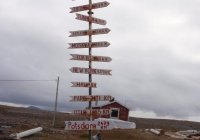
News article
Evolution in real time on Bear Island
Researchers tracked the northern-most freshwater fish over an entire year with surprising results.
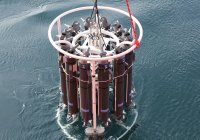
News article
The first lead measurements from the Amundsen Sea
Efforts to reduce industrial emissions of lead have been ongoing for several decades. The near-global phase-out of leaded automobile gasoline has showed decreases in environmental lead contamination. A reasonable expectation is that industrial lead concentrations have also measurably decreased in the Southern Ocean. Since lead also has natural sources, a group of scientists decided to examine the relative importance of anthropogenic lead in the Amundsen Sea, a shelf region of West Antarctica, in the first measurements of this sort.
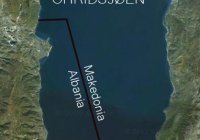
News article
Water Research Across Borders in the Balkans
For the first time, biologists from Albania and Macedonia have worked together to improve ecological status in Lake Ohrid.
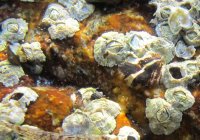
News article
DNA analyses reveal secrets about the Pacific oyster
Since the millennium, water masses in the Skagerrak sea have become sufficiently warm for Pacific oyster larvae to survive the journey to Norway from the coasts of Sweden and Denmark. In the same period, the occurrence of wild oysters has exploded along the Norwegian coast. Is oyster larvae drift across the Skagerrak the cause of this great increase? New DNA analyses provide insight into the origin of the first wild Norwegian sea oyster populations.

News article
New infrastructure for research on land-ocean interactions
To facilitate research on land-ocean interactions the Norwegian Institute for Water Research (NIVA), with financial support from the Norwegian Ministry of Climate and Environment, has established a new infrastructure in a river-fjord system (Storelva river – Sandnesfjord) close to Tvedestrand in Aust-Agder County.

News article
Strengthening passive sampling of nonpolar chemicals
Passive sampling is a valuable technique for monitoring concentration levels of hydrophobic persistent organic pollutants (POPs) in the marine environment. New guidelines for the determination of partition coefficients between passive samplers and water have recently become available in new report.
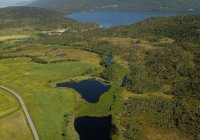
News article
Effective restoration of aquatic ecosystems
Despite having increased human wellbeing in the past, intense modifications by multiple and interacting pressures have degraded ecosystems and the sustainability of their goods and services. For ecosystem restoration to deliver on multiple environmental and societal targets, the process of restoration must be redesigned to create a unified and scale-dependent approach that integrates natural and social sciences as well as the broader restoration community.
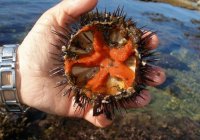
News article
Sea urchins: from pest to plate
It is one of the best paid seafood products and destroys kelp forests worth millions of NOK. Can sea urchin harvest be profitable?
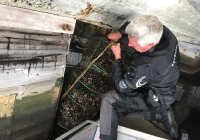
News article
Caged blue mussels as environmental detectives
May 2015, Kristiansand, Norway. Two researchers in a boat loaded with thousands of blue mussels, collected from a mussel farm in Lillesand. The boat heads out the Kristiansand fjord, and the researchers deploy the blue mussels in the sea. Why are they doing this?

News article
Monitoring alien marine species
NIVA have in a new study examined the occurrence of marine alien species in the Oslo fjord to develop a cost-effective method for early warning of new alien species, and of monitoring the spread and ecological effects of some selected alien species.

News article
CERAD
The CERAD Centre for Environmental Radioactivity (CERAD CoE) was established by the Research Council of Norway to provide new scientific knowledge and tools for better protection of people and the environment from harmful effects of radiation (2013-2023).

Project
PATTERN
Plastic pollution in freshwater environments is a pressing global concern due to its ability to accumulate in the environment. The long-term impacts of this pollution on freshwater ecosystems are still to understand. In PATTERN project, we aim to understand how plastics can influence nutrient composition and the natural exchanges in biological information, with a focus on the biofilms colonizing plastic’s surface. We aim to rate the environmental relevance of these processes and to assess the threshold at which plastic pollution disrupts freshwater ecosystem functioning.
Area